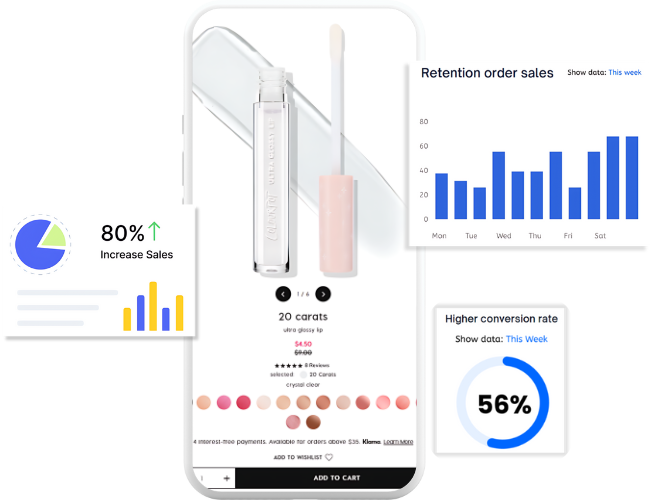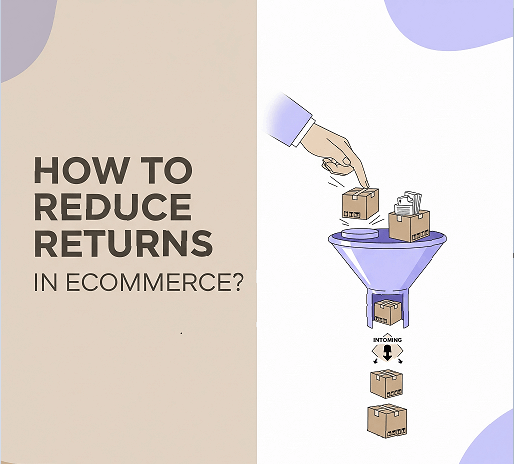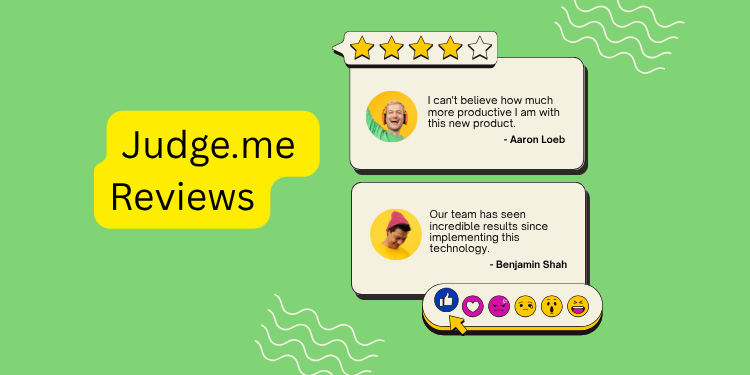In terms of money matters, Shopify merchants and their customers are spoilt for choice with over 100 payment providers and online payment gateways. From credit card payments and PayPal to Crypto and local payment methods like Alipay, very few e-commerce platforms make paying and receiving payments as convenient as Shopify. Of all the payment methods, Shopify payments stand apart from all other payment gateways, such as Shopify’s proprietary payment solution.
Over the years, more and more Shopify merchants have adopted Shopify payments as the primary payment gateway for their stores. Shopify encourages merchants to use this payment gateway with the promise that it’s faster, more convenient, and saves money. This article aims to demystify Shopify’s native payment gateway and find out if it is worth it for merchants.
What are Shopify Payments?
This is Shopify’s native payment processor, powered by Stripe, an online payment powerhouse. This payment gateway enables merchants to accept payments and manage online transactions without the hassle of setting up third-party payment providers.
Shopify also makes setting up this payment gateway for your store quite easy. You only need to enter your store’s settings and activate Shopify Payments. Merchants must also secure their stores with the two-step authentication feature to activate payments and enjoy its benefits.
Shopify payment automatically allows you to accept all major payment methods on your store. Additionally, there are no third-party transaction fees for orders processed through Shopify payments. You can enjoy higher profit margins on online and manual payments such as cash, cash on delivery, and bank transfers.
Shopify Payments Methods
One of the best features of this payment service is that it lets merchants accept payments across all major credit cards. Your customers can easily and quickly make payments through the following credit cards:
- American Express
- Mastercard
- Visa
- Google Pay
- Apple Pay
- Shop Pay
- Discover
Who Can Use Shopify Payments?
Although Shopify makes this payment gateway available in all stores on the platform, the service is only supported in a few countries. Check if the region your store operates in is supported.
Supported countries include:
- United States
- United Kingdom
- Switzerland
- Sweden
- Spain
- Singapore
- Italy
- France
- Japan
- And Australia, among others
There are also some eligibility criteria that merchants must meet to use Payments. Fortunately, these eligibility rules are too stringent.
How Does Shopify Payments Work?
Once you confirm that you qualify for Payments, just activate it on your store and:
- Create a Stripe account. It’s the payment gateway that powers Shopify Payments. Connect your Stripe account to your online store.
- Connect a bank account to your store. This account will receive all payments sent to your store.
- Finally, you can start accepting payments using Shopify payment methods with these two accounts.
While Shopify payment processing may take a few seconds on the surface, a customer’s payment goes through an extensive architecture underneath.
Here is a general overview of the processes and actors involved in Shopify Payment.
1. Payment Initiation
The entire process starts when the customer initiates the transaction by paying for a product in your store.
2. Payment Methods
Once the customer decides to pay for a product, they’ll have to choose which payment method they prefer to use. Since the merchant provides a list of payment options, you’ll need to provide options that your target audience can easily utilize.
3. Processing the Payment
Once the customer chooses their payment option and enters their payment details, the data is encrypted and sent to the processor via the payment gateway. Shopify payment gateway acts as an intermediary tool that sends payment information to and from the involved parties: the merchant, customer, and payment processor.
4. Authorization
To acquire the funds, the payment processor has to seek authorization from the customer’s bank account or credit card company. The bank only authorizes the payment after confirming that the customer has enough funds or credit in their account.
5. Settlement
Once the payment processor gets the confirmation from the customer’s bank, the payment is released to the merchant’s bank. This stage involves the transfer of funds from the customer to the merchant, and it can take a day or two.
6. Payment Confirmation
Both parties will receive a payment confirmation message once payment is successfully processed and settled. The payment confirmation message can come in the form of an SMS or email.
Shopify Payment Security
Shopify security features extend to payment gateways, which also include third-party gateways. The security and safeguarding measures ensure that customer and site data are protected. Shopify payment processing method uses the latest security technologies and protocols to encrypt payment details in order to protect your business from hackers and other cyber-attacks.
Some of the security features and protocols Shopify uses in its payment gateway include –
- PCI-compliance. As a certified Level 1 PCI DSS-compliant platform, Shopify is well-equipped to handle credit and debit card information. This compliance protocol ensures that your customer’s payment details are encrypted and protected online.
- Two-factor Authentication. This feature protects your store from unauthorized access by adding an extra layer of protection. In addition to username and password, Shopify will require you to verify your identity either through a mobile phone or security key before allowing you access to your account.
- Advanced Fraud Protection. It can help you detect and prevent fraud and scams in your store.
- 3D Secure Checkout. This security feature adds a layer of security for credit and debit card transactions. It adds an extra authentification step that redirects the user to the card issuer’s domain and then back to your store.
Shopify Payments Fees
Just like any other e-commerce platform, Shopify merchants have to factor in Shopify transaction fees when choosing a payment plan and payment gateway.
Although Payments relieves you of third-party transaction fees, your store will have to contend with online credit card and in-person credit card rates. The platform charges different credit card rates based on the store’s payment plan.
Here is a table of the different Shopify credit card fees based on payment plan
| Plan | Online Credit Card Rates | In-person Credit Card Rates |
| Basic Shopify | 2.9% + 30¢ | 2.6% + 10¢ |
| Shopify | 2.7% + 30¢ | 2.5% + 10¢ |
| Advanced Shopify | 2.5% + 30¢ | 2.4% + 10¢ |
| Shopify Plus | Most competitive rates | Most competitive rates |
Shopify Payments fees also depend on the type of credit card. For example, Shopify credit card fees for Visa cards will differ from American Express card transaction fees. Additionally, transaction fees will also depend on the location where the credit card is registered. Therefore, you’ll have to consider domestic payment processing fees if the credit card is issued in the same country as your store. On the other hand, if the credit card is issued in a different country, cross-border payment processing fees will apply.
Third-party Transaction Fees
The platform also charges different transaction fees for each package plan when it comes to third-party payment gateways. For example, merchants on the basic Shopify plan pay a transaction fee different from merchants on the advanced plan.
Here is a table of the different Shopify payment plans and their transaction fees
| Plan | Transaction Fees |
| Shopify Starter | 5% |
| Basic Shopify | 2% |
| Shopify | 1% |
| Advanced Shopify | 0.5% |
| Shopify Plus | Custom |
Third-party transaction fees cover the cost of Shopify integrating with external payment providers. Merchants who set Shopify Payments as their primary payment gateways don’t have to worry about transaction fees for all other payment methods.
Conversion Fees
In addition to transaction fees, Shopify also charges merchants conversion fees for accepting payments in a different currency from their payout currency. These Shopify fees are charged when the amount you receive is in your customer’s local currency and is converted to your payout currency. If your payout currency is the same as the customer’s local currency, you won’t have to pay the currency conversion fee.
Although currency conversion fees may seem like a drawback, they are a necessity if you want to offer your customers a great shopping and checkout experience. Shopify supports selling products in your customer’s local currency. Additionally, you can enhance this feature by using the Langwill app, which allows customers to shop in their local languages, offering a more personalized shopping experience.
Lastly, Shopify Payments also adds taxes to your processing fees and saves the tax details on the Payout pages. This feature comes in handy in tax assessment and accurate record-keeping.

Easily translate store into multi-languages & multi-currency
Understanding Shopify Payments Processing Time
So, you’ve made a sale and paid all the necessary transaction fees; now it’s time to get paid. This is the point when you ask, “How does Shopify pay you?”
Shopify uses a daily payout timetable to send payments to merchants. This means you can expect yesterday’s transactions to hit your Shopify account today. Now, for the funds to move from your Shopify Balance account to your bank account is where the story changes.
Typically, direct deposits take 2-3 business days after processing to hit the merchant’s bank account. Transactions made on weekends and holidays accumulate and are released on the next payout.
Payouts on Shopify Payments
For merchants using Payments, Shopify offers several payout methods that allow them to access their earnings in a couple of convenient ways.
Firstly, there’s a traditional method of directly depositing your funds into your bank account. This method is initiated 2-3 days after processing through Shopify’s native payment gateway.
The second option allows you to instantly access your funds from your Shopify Balance account. When daily payouts hit your Shopify Balance account, you can receive your earnings as fast as one business day. You can also choose to spend or transfer the funds to your Shopify Balance. Additionally, Shopify Balance allows you to access a digital card that works like a debit card. This way, you can make payments and ATM withdrawals whenever you want.
Thirdly, you can set up a payout schedule that’s convenient for you. Shopify Payments lets you choose between a weekly or monthly payout schedule to ensure you have consistent payments. With this method, your payouts will be adjusted to your schedule so you can easily manage your store’s finances.
Checking Payout Status
Once a transaction is complete, Shopify Pay will categorize it according to the payout stage it’s currently in; payout status can either be ‘In Transit’, ‘Paid’, or ‘Failed’.
- In Transit – payout processing is still ongoing and is yet to be completed
- Paid – payout has been sent to your bank account and is no longer with Shopify. In this stage, you have to factor in your bank’s processing time as well.
- Failed – payout could not go through to your bank account due to an error.
It’s important to regularly check your payout status and your Shopify Balance to have an accurate overview of your funds.
What Is the Difference Between Shopify Payments and Shop Pay?
Shopify Payments is the official payment gateway that enables merchants to accept many payment ways directly on the site. Shopify Payments offers no third-party transaction fees and speedier payment settlements.
Shopify’s Shop Pay function securely keeps client payment information for a faster and easier buying experience. Shop Pay Installments allows customers to pay in installments at checkout for orders ranging from $50 to $20,000. Shop Pay Installments is only accessible for stores using Shopify Payments as their primary payment channel.
Why Should I Use Shopify Payments?
Now, you might qualify for the Shopify payment gateway and have a good understanding of how the feature works, but you still don’t know whether or not it’s worth it for your store.
1. Ease of Use
Activating Shopify Payments doesn’t require any coding or technical knowledge. You simply need to log into your admin account, toggle to payments, and activate the payment gateway.
Payments let you easily accept payments, get payouts more conveniently, and make direct deposits into your bank account. Additionally, your customers can pay you directly without being redirected to a third-party app or website.
2. Shopify Payment Integration
With Payments activated, your store’s online and offline inventory will automatically integrate with the payment gateway. This way, you’ll have a birds-eye view of your entire store’s revenue data, allowing you to manage payments and make data-driven decisions. You can easily manage failed payments and issue refunds from within your admin panel.
Shopify’s native payment gateway also integrates well with other payment gateways like Apple Pay, Meta Pay, and Google Pay. Therefore, if your customers pay through these gateways, you’ll still get paid through Shopify Payments.
3. Shopify Customer Service and Support
Shopify payment gateway comes with multiple ways of getting support. You can leverage the platforms’ 24/7 live chat support, help center, and community forum if you run into problems with Shopify payment processing.
Shopify support also offers tons of different tutorials, guides, and blogs on every aspect of payments.
4. International Sales Payment Solutions
Since Shopify’s native payment gateway is supported in over 20 countries, merchants can sell internationally with no worries. This gives you a large customer base that can enjoy better shopping and checkout experience.
5. Shopify Payment Simplifies the Refund Process
Merchants who use Shopify Payment can leverage its built-in refund system to settle disputes. This system allows you to process refunds quickly and easily. A good refund system will make what is usually a time-consuming and frustrating process a convenient and unwary process.
You can complement Payment’s built-in refund system with ParcelPanel Return & Exchange to have a more streamlined refund and return system for your store.
#1 Shopify Tracking Solution for eCommerce
6. Supports Multi-channel Selling & Offline Sales
Merchants can sell in person and accept payments with Shopify Payments by using Shopify POS. You can also sell your products on multiple platforms and manage listings, sales, and inventory in one place.
7. Safe and Secure Checkout
Shopify Payments is one of the safest and most secure payment gateways on the platform. Shopify’s native payment processor is protected with 128-bit SSL encryption technology, 3D Safe Checkout, Advanced fraud protection protocols, and Shopify Protect, just to mention a few.
8. Better Shopping and Checkout Experience for Your Customers
Since Payments integrate seamlessly and are protected in your store, your customers will enjoy a safer shopping and checkout experience. The payment gateway comes with accelerated checkout and Shop Pay installments, which encourage customers to shop more.
Shopify Payment Setup
As stated earlier, setting up Shopify Payments for your store is easy and quick.
Here are the steps to activate Shopify’s native payment gateway on your store.
Step 1: Review your eligibility
You’ll have to confirm that your store operates in supported countries, and then ensure that your store meets the country-specific requirements.
In addition to supported countries, you also need to ensure that your business type and products are not prohibited. Prohibited businesses and products include adult products, Pseudo pharmaceuticals, and counterfeit products, just to mention a few. You can read more about eligibility rules and criteria here.
Step 2: Choose your store currency
Once you confirm you’re eligible, choose the currency your products are sold in. You can choose a store currency on the settings panel of your admin dashboard.
Head over to your Shopify admin page and toggle to Settings. Once on settings, click on ‘Store details’ and then go to the ‘Store Currency’ section. Now, you can select your store currency from a currency list and click ‘Save’.
Your store currency can be different from your payout currency.
Step 3: Activate Shopify Payments
Still, on your Admin dashboard, click on ‘Set up payments’ if you haven’t set up a payment provider. Afterward, click on ‘Set up Shopify Payments’. Now, you can complete the account setup in the Payments section.
The payment section also allows you to switch to Shopify Payments if you had previously set up a different payment provider.
Step 4: Enter business detail
To complete your Payments activation, enter your personal and business details, such as your business and tax number.
Step 5: Wait for confirmation
Once you complete the registration, just wait for the Shopify payments review on your store to complete. This can take up to three business days.
Limitations of Shopify Payments
Although Shopify payment is one of the best payment gateways on the platform, it does come with a few drawbacks.
- Not available in all countries. Shopify’s native payment processor is only available in about 23 countries.
- Not available to all stores and product lines. Shopify payment processing is only available for stores that comply with their terms and conditions. This restricts the products you can sell and your shipping policies.
- Shop Pay is only available for customers with a billing address in the United States. Therefore, you cannot offer Shop Pay to customers from different regions.
- You have to ensure your store complies with the Shopify Payments terms and conditions for your country and industry.
Stripe vs. Shopify
Although Stripe powers Shopify Payments, on its own as a standalone payment gateway, it offers different features to customers and merchants.
| Feature | Stripe | Shopify Payments |
| Payment methods | Offers various payment methods, including debit and credit cards, ACH transfers, digital wallets, and local payments. | Also supports various payment methods, but it is optimized for the Shopify ecosystem. |
| Customization | Provides highly customizable APIs | Offers basic customization options on the admin panel. Advanced customization is also available. |
| Transaction Fees | Charges a flat transaction fee with additional costs for currency conversion. Standard pricing rate 2.9% + 30¢ | No additional transaction fees apart from credit card processing fees and currency conversion fees |
| Monthly fees | No monthly fees for Shopify Stripe | Free on any plan |
Conclusion
Shopify Payments is the ideal payment gateway for businesses that want to flourish under the Shopify ecosystem. In addition to a convenient payment gateway, Shopify also offers thousands of apps and integrations that you can use to improve your store’s shopping and checkout experiences. For example, you can use checkout apps like sticky add to cart together with Shopify payments to increase the probability of product checkout.
You can also take advantage of Shopify capital to build your business. This financial program offers merchants cash advances and loans to eligible businesses.
Start your Shopify journey today!
FAQs About Shopify Payments
Note: This blog was originally written in English and translated using an automated tool to make the content accessible to a global audience. We believe in sharing valuable insights with everyone and apologize for any inaccuracies. If you spot any errors, please feel free to contact us for corrections. Your feedback helps us improve and ensures the content’s value is fully realized.






